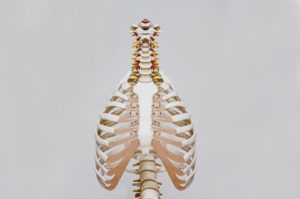
We’ve all been there-at an auto body shop, buying new appliances, having someone over to check out our plumbing, and in this case, our furnace and AC.
A good technician is going to make sure you understand the problems you’re facing as well as the importance of the different parts and terminology they mention. So what can you expect from a technician’s visit to check on your furnace or A/C? Here’s a rundown of the insides-and outsides-of your equipment.
Heat Pump
Something to consider, this is better for homes in more temperate climates that don’t see extreme temperatures that consistently go below freezing-or frequently below zero-in winter. Essentially, it’s your air conditioner in the summer, and then in the winter, it runs in reverse to warm your home.
It will push refrigerant through to make the coil hot. This way, when the cold air gets pulled through it absorbs the heat from your coil instead of the heat exchanger in a furnace.
This system can achieve a 300% efficiency. That means for every $100 you spend on propane, you get $300 worth of heat in your home. And in every $100 you spend on natural gas, you’ll get $200 worth of heating. The best furnace you’re going to get is 95% efficient-which means for every $100 you spend, you’ll get $95 in heat. The remaining 5% is an exhaust that you don’t even use in your home.
So it’s over two to three times more efficient than the furnace depending on which fuel you are using. This may be a solution for you if you live in a more moderate environment throughout the year.
Mini Split
Have you ever been to a room that gets too warm or you always need to pull out grandma’s quilt? A mini-split gets you comfortable. Any room not heating or cooling properly can have its own system with its own thermostat.
Insulated Duct
Yes, it’s just as it sounds. You’ll see ducts surrounded by insulation when they pass through a crawl space or an attic.
Sealed Duct
Aerosealing is a way to make sure that none of the air filterings through your ducts leak out before making it to you in your living room, or bedroom, or bathroom, or…you get the picture. Not only that, but your system will perform twice as well as expected when it comes to the overall efficiency of comfort and reducing-this is a big one-your energy bill.

Static Pressure
Ever go to the doc and they break out the big cuff that tightens around your arm like a cobra all in the name of checking your health? Like blood pressure in you, if static pressure is too high in your home’s system, there can be serious issues. A technician will test the system once the installation is complete to ensure the pressure is at the right level, extending the life of the new system and keeping it at peak performance.
Thermostat
A new thermostat is usually included with your new system because many times a new unit can cause the old, outdated thermostat to stop working. Check out some of the benefits of upgrading to a smart thermostat.
Duct Cleaning
Power! When running your updated system, the new blower motor is going to have a lot more power. It’s going to push about one and a half times the airflow that you’re having now. This means all that “stuff” that’s been collecting for years is going to get stirred up and blown through your home. Yuck!
You’re going to breathe it in which is unhealthy for you and your family-plus it can affect allergies and the overall cleanliness of your home. Additionally, that dirt and dust are going to get pulled right through that new high-efficiency system you just invested in and that efficiency will drop quickly. Here is some more background on indoor air quality.
Zone System
Have a finished basement? A second floor? Zoning provides maximum comfort. You can add a thermostat in your upper guest room and one in your downstairs family room and whatever you set on those thermostats is what you’ll feel in that room. It does cost more and does reduce some efficiencies, so be sure to check out all your options first before dedicating time and money to zoned systems.

Sanitizing
As the cherry on top of your duct cleaning, a sanitizer will be put through your ducts that will kill any mold, mildew, or bacteria that the first phase of cleaning couldn’t suck up.
Humidifier
Ever get a shock walking around your home? Have dry or itchy skin? Having humidification can help keep your skin healthy and flake-free and reduce static in the winter. It will also make it feel warmer causing you to be able to keep the thermostat set lower resulting in more efficiency and lower energy bills. Think of it this way-what feels warmer: 100 degrees in Florida or 100 degrees in Arizona?
Dehumidification
If your air conditioner is properly sized, it will dehumidify. For example, if you have a musty smell in the basement it may need to be dehumidified. There are many ways to do this one of them being to have the proper ductwork in the basement. This allows it to dehumidify better vs. buying a separate dehumidifying system.
Filtration
Yes, your filters. The ones that you’re never sure if it’s the 10×20 or 14×20 or maybe the 16×24, or wait, was it the 12×30? Regular air filters pull out 7% of the dust, mites, skin cells, and all sorts of “particles” in your home’s air. Seem surprisingly low? There are filtration systems that can pull out 97% at .3 microns today. That means 97% of everything going through the air is .3 microns.
If you have an air cleaner like this, you will never have to pay to clean your blower motor or A/C coil because if it gets dirty, your contractor should clean it for free (if it’s in their guarantees). It protects your investment on the ducts you have cleaned and the high-efficiency system you invested in. Additionally, it kills mold and bacteria, neutralizes viruses, and kills odors so that your air is clean, fresh, and healthy.


